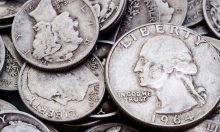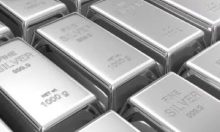
What Influences Silver Prices
Investors have long valued silver as a precious metal that provides a means of currency and a store of value, all while having many practical uses. Due to this multi-tiered usage, there are varied influences on silver’s price that affect demand and supply. Macroeconomics and market forces play a significant role in the supply and demand for silver, which, in turn, can influence silver’s price.
To understand how and why silver prices fluctuate, we can review silver’s historical relevance as a currency, the fiscal policies that come into play, and the forces that drive the supply and demand of this important precious metal.
Currency strength
Silver’s strength as a currency in the US alone dates back hundreds of years. Many people are not aware that a bi-metallic, gold/silver standard was written into the US Constitution by the Founders. A few decades later, the Coinage Act of 1792 defined the US dollar in terms of silver. It can be said the original money of the USA was not gold, but silver. Even gold coins at the time were pegged to silver.
Today, countries around the world use the United States Dollar (USD) as the world reserve currency. They base the value of their own national currencies on the US dollar. But USD is subject to debasement through quantitative easing, which enables Federal Reserve policymakers to infuse more dollars (such as trillion-dollar stimulus packages) into the currency. That’s why the cash you put into a savings account ten years ago will have less value today; much less when you take inflation into account.
While silver is still legal tender and people can spend silver coins, its prevalence is not in the area of currency. It’s more important as a store of value and a safe haven asset for times of economic uncertainty.
How digital currencies come into play
While we know cash is no longer a good store of value due to inflation, its role as a currency is also coming under fire, particularly in light of the digital currency movement. Digital currencies like Silver Coin that are backed by precious metals bring safe-haven assets into the digital realm. They not only improve on the currency value, but they also add value in the form of convenience and lower costs to transact.
Inflation threatens the status quo
The threat of inflation due to central bank policies has been augmented during 2020’s pandemic-induced financial crash. The Federal Reserve introduced unprecedented amounts of new dollars amid high employment numbers and pandemic-related industry shutdowns.
Because USD is the world reserve currency, inflation was kept at bay somewhat in 2020 because of a global shortage of US dollars. But as time goes and other hard asset-backed currencies like Silver Coin come into play, the markets may soon be changing their mind about their currency of choice.
Why silver and not gold?
When we think of silver as a currency, we don’t have to revert to the once widely used silver coins. Even though half dollars and many other silver coins are considered legal tender today, introducing more into circulation is not necessary for silver to once again act as a valued currency.
While gold may come to mind first when considering precious metal-backed currencies, silver has historically been part of the conversation. A currency that is backed 1:1 to silver price can offer a viable alternative. For instance, a debit card or smartphone application can be linked to silver reserves. This is mainly due to its long-term value, growing demand industrially, and performance over time.
Silver and gold do not always react to market forces and macro events similarly, such as in times of bear or bull markets. Because gold has a larger market cap and better liquidity, it’s price movement may be slower and less significant. On the other hand, the silver market is not quite as active and reacts in different ways. For instance, silver far outperformed gold in the years following the 2009 recession.
As another example, during the global pandemic of 2020, unemployment rates were high, and many industries crashed to a halt. Silver’s price increase beginning in March was much more drastic than gold’s. Yet the 1980’s recession shows opposite results, signaling the strengths of both gold and silver during and after times of economic distress.
In 2020, with quite possibly the world’s worst economic recession in our midst, rethinking currencies with proven commodities like silver must be part of the solution. As we look ahead at market-driven currencies, the meaning of a dollar could translate into a silver coin, a paper certificate representing silver, or a digital ledger entry that is redeemable in silver.
Commodities prices in USD
Perhaps one of the most important implications of silver price is its relationship with the US dollar. Since most commodities like silver are denominated in USD, price movements of the dollar can also directly affect the price of silver.
But, more often than not, silver and the USD are inversely related. When USD is going down, silver often is on the rise, and vice versa. While US markets are lacking stability, silver shows its worth as a long term store of value that protects from cash holdings and hedges against stock market volatility.
Fiscal policy
In the current economic environment, the prospects of silver investments are gaining attention as a long term store of value and a hedge against inflation. Government debt is soaring, bond interest rates are zero or heading to negative numbers, and the entire monetary system is propped up by a banking system that continually adds more zeros to its ledgers. $9 trillion dollars have flooded the USD currency in just 2020.
What that does to the dollars you are holding now is quite obvious when you consider the number one market force: supply and demand. With an unlimited supply, it is difficult to view the USD as a viable, long-term currency.
Since the gold standard was removed from the US dollar in 1971, the only backing of the dollar has been the strength and promise of the US government. Thirty years later, China is a leader in developing a central bank digital currency. They plan to replace the USD as the world reserve currency.
Meanwhile, US policymakers lag under administrative burdens that are subject to the rising polarization of America’s two main political parties. The result is a government that has been restrictive of innovation in financial technology, even though markets increasingly show favor toward digital currencies and sound money.
While governments try to compete for global reserve status, silver-backed currencies are ripe for expansion. Market forces will compel investors to seek assets outside of fiat regimes, which have shown their fragility during the Covid-19 pandemic and subsequent lockdowns.
The case for a new monetary order derived from precious metal-backed currencies has never been so strong. Bond yields that have historically been a proven safe haven are now suppressed by expectations of inflation due to rampant QE. Additionally, stock markets have shown unprecedented volatility during 2020, driving investors to seek refuge with safe-haven assets like silver.
Where silver shines
In comparison with gold, silver is significantly undervalued on a historical basis. Silver’s volatility rate is usually 3x more than gold. This makes it a better performer during bull markets when investors usually turn to stock markets. It can also mean that during a bear market, gold will outperform silver.
But in 2020, even the magnitude of the macro events and global uncertainty could not deter a stimulus-induced stock market bull run. Gold performed well due to mass uncertainty and investors moving to safe-haven assets. But silver actually outperformed gold in the first three quarters of 2020.
Practical demand
To get the full scope of silver’s long-term value proposition, we must also take a look at how the practical demand for this useful metal plays into price movements. Demand for silver comes in many shapes and forms. But more than 60% of all silver goes toward a variety of industrial uses, including:
- Dentistry
- Solar energy
- Electrical
- Computer chips
- Alloy production
- Batteries
- Medicine
This high level of versatility helps ensure a long era of demand for this precious metal. Demand for things that are made from silver includes popular silverware sets, solar panels, semiconductors, and touch screens. The technological uses, in particular, may see an upsurge as emerging nations increase the use of modern technology.
More than half of gold, in comparison, is used to make gold jewelry. Another 45% of gold goes towards investors and central bank holdings. Less than 8% of gold goes toward industrial uses. When a macro event hits, this is yet another reason why it’s important to hedge with not only gold but silver as well.
When stock markets soar
During the 2020 pandemic, technology stocks soared as people took to working from home offices and shopping online. This may have contributed to silver’s price more so than gold’s because of its greater importance to tech industries. During the lockdown, millions of people worldwide lost their jobs or saw reduced hours, limiting their spending abilities – especially when it comes to luxury items like gold jewelry. But silver’s versatility kept this hard asset very much in the game during challenging economic times.
Employment rates
Job markets will also have a role in silver’s price. Historically, when job markets have stability, and the employment rate is high, the price of silver is somewhat stable. You may even see an increase in silver consumption from people buying more silver jewelry during such times. But when a nation is suffering from high unemployment and the financial markets are unstable, consumer spending on gold will likely decrease, affecting the price with this change in demand.
The versatility of industrial silver
With clean energy being a focus for many countries, the use of silver in solar technologies creates a growing demand for this metal, which is used to make photovoltaic panels. Its use in the medical field as an immunity supplement may increase during a pandemic, while its demand in the photography industry may wane during colder months in some regions. But with so many uses, silver’s versatility is in itself a hedge against volatility.
Silver price today and tomorrow
Knowing all the factors that play into the price of silver helps investors diversify their portfolios for the long term. Those that invested in silver in 2020 saw 3rd quarter gains of over 60% to reach a 7-year high. Even with industry shutdowns, the precious metal reached a $30 per ounce price by mid-August.
In today’s modern financial markets, there is a multitude of ways to invest in silver to gain an edge and protect your wealth from errant fiscal policies and negative macro events. You can choose from Exchange Traded Funds (ETFs), silver certificates, coins, and silver-backed cryptocurrencies. With demand growing and many governments getting comfortable with infinity QE and negative interest rates, investors are finding silver to be one of their favorite safe-haven assets.
Make an investment in SilverCoin
Now that you know more about silver. Isn’t it a perfect time to buy today?
Purchase SilverCoin
